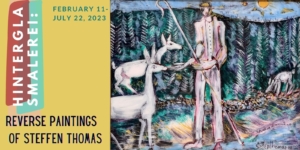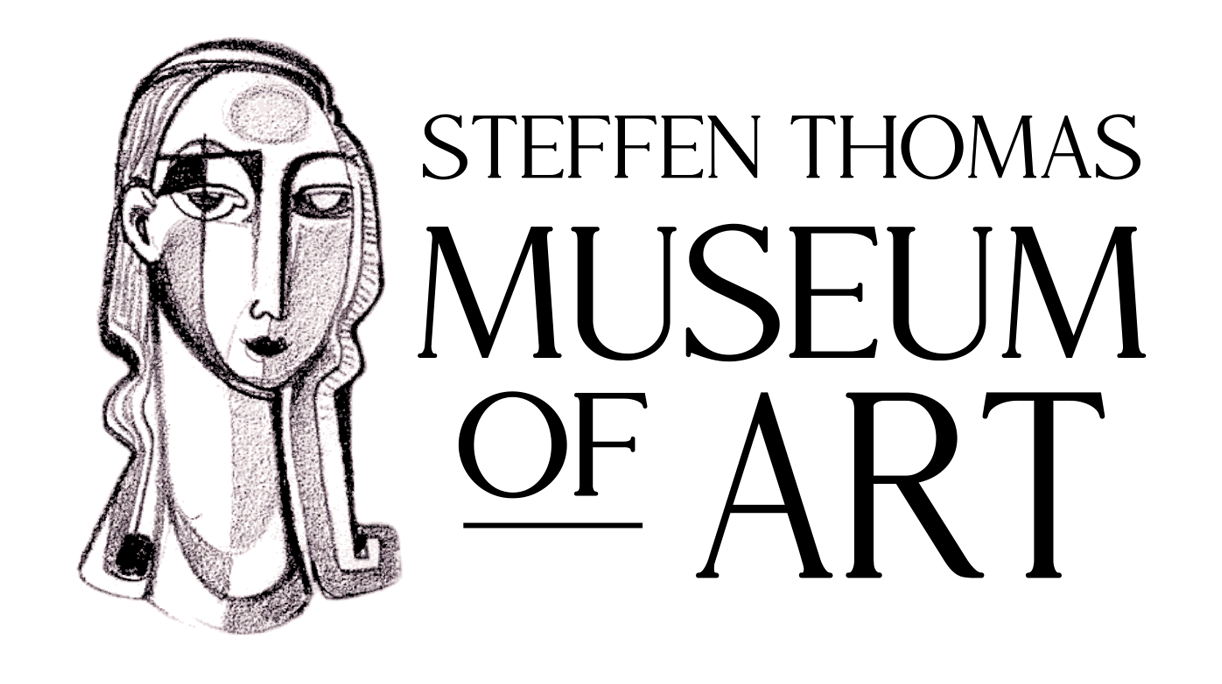 hinter = behind
hinter = behind
glas = glass
malerei = painting
An educational exhibition, Hinterglasmalerei: Reverse Paintings of Steffen is a show focused around the reverse glass paintings of Steffen Thomas created between the 1960’s and the late 1980’s. This show will be on view February 11 2023- July 22 2023.
Reverse painting is a technique in which the artist creates images by applying paint to a piece of clear glass or acrylic, such as Plexiglas, in a reverse order. The foreground outlines are applied first, then the middle ground colors, and lastly the background is painted on top of everything. Even the artist’s signature must be written backwards. The finished work is viewed from the opposite side of the glass or acrylic.
The technique of hinterglasmalerei, or reverse glass painting, has existed for over 1000 years, going as far back as the Greek and Roman empires, before spreading throughout Bavaria, Austria, Bohemia, and Moravia during the late 1500’s into the early 1800’s. Initially only available to wealthy patrons, reverse painting in this region transformed into a popular form of folk art as glass became more widely available.
In 1966, the Solomon R. Guggenheim Museum in New York City hosted the exhibition Vasily Kandinsky: Painting on Glass (Hinterglasmalerei), curated by Dr. Hans Konrad Rothel from the Stadtische Galerie in Munich. The exhibition featured reverse paintings on glass Kandinsky created between 1910-1913 as well as Bavarian hinterglasmalerei from the artist’s own collection. Besides Kandinsky, Gabriele Munter, Franz Marc, and other artists from the Blaue Reiter (Blue Rider) group all experimented with reverse painting on glass during this time.
It’s believed that, although Steffen Thomas was unable to see the above-mentioned exhibition in person, he would’ve learned of and been inspired by what these artists were doing. Adopting this new form of painting in the 1960’s, Steffen Thomas would go on to create several reverse glass paintings throughout the rest of his career. Starting in the 1980’s Steffen Thomas began using plexiglass in replacement of regular glass, given its durability.
Today, the folk art tradition of hinterglasmalerei is still practiced in Sandl, Austria, and was named a UNESCO Intangible Cultural Heritage in 2012.



